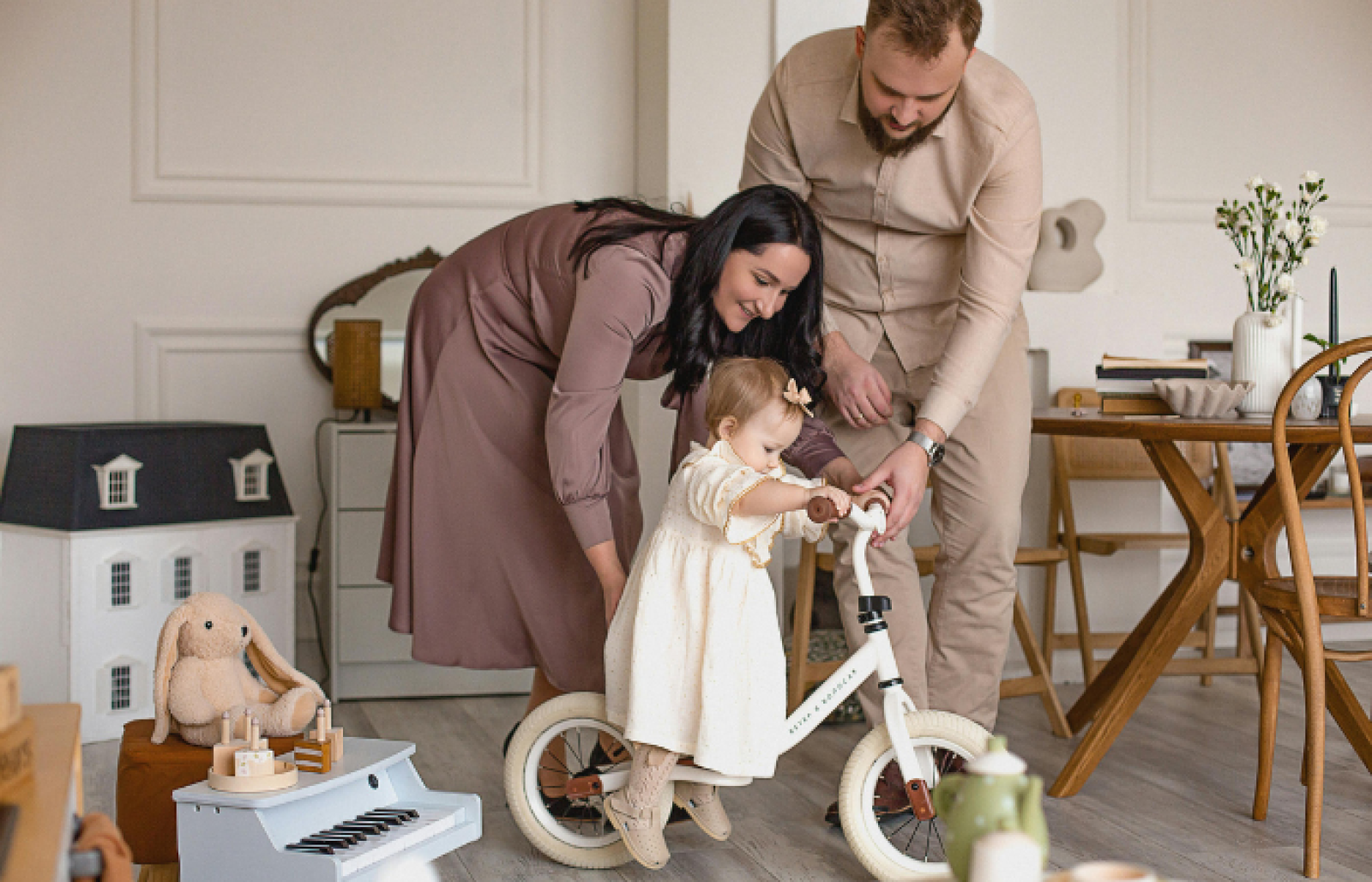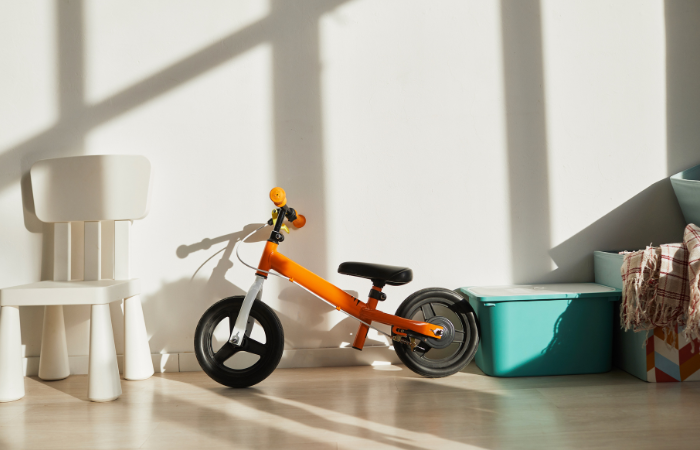How to choose perfect balance bike?

How to choose a balance bike for a child?
Are you choosing the first vehicle for your baby? It's time to figure out what a balance bike is and how to choose it.

Let's start in order. A balance bike is a two-wheeled bicycle without pedals that helps a child learn to keep balance, develops coordination and confidence in movement.
To make trips safe and comfortable, it is important to choose the right balance bike: suitable for age, height and other parameters. We will tell you about all the nuances in the article.
At what age can you buy a balance bike for a child?
Manufacturers recommend starting to teach a child to ride on a balance bike from 1.5-2 years old. It is at this age that children already develop independent walking skills and improve their coordination of movements.
A balance bike for 2 y.o. should be as light as possible, with small wheels and a low seating position. It is important that the child can confidently touch the ground with his entire foot while sitting on the seat. This will ensure safety and comfort while riding. From the age of three, you can choose more functional models: with adjustable steering wheel and seat, inflatable wheels and brakes. A balance bike for 3 years is perfect for active kids who are already confidently moving and ready for their first “high-speed” walks.
Important! When choosing, always focus on height, and not just age - children develop differently. The main rule: the balance bike should “grow” with the child and remain comfortable for several seasons.
Which balance bike is better: the main selection criteria
Frame material
- A plastic balance bike is a lightweight and inexpensive option, but may be less durable.
- A metal balance bike (usually aluminum or steel) is durable and stable, but a little heavier.
- Wooden models are attractive in design, but often do not have adjustments.
Advice! If you are looking for a lightweight balance bike, we recommend choosing between aluminum or plastic models.
Balance bike weight and child's height
The weight of the balance bike directly affects the comfort of riding. For children under 3 years old, models up to 3 kg are optimal. When choosing a model, make sure that the seat height matches the child's height. Ideally, the model should have an adjustable seat and steering wheel.
Wheels
EVA wheels are lightweight, do not require maintenance, but have worse shock absorption.
Inflatable rubber wheels - a soft ride and better grip, but require pumping.
If you plan to walk a lot in parks and go to off-road, choose a balance bike with inflatable wheels. This model will be more comfortable for the child.
Presence of brakes
For children from 3 years old, it is advisable to choose a balance bike with a hand brake. This helps the child learn to control speed and prepares for the transition to a bicycle.
Additional options
Some models are equipped with footrests, bells or baskets. They make traveling more fun, more convenient and somewhat safer.
What is the difference between a balance bike and a bicycle
Many parents wonder what the difference is between a balance bike and a bicycle — which one to choose for their child. In fact, a balance bike is an ideal intermediate option before a regular bicycle, and here's why.
No pedals — easier to learn
The main difference between a balance bike and a bicycle is the lack of pedals. Thanks to this, the child concentrates on maintaining balance and developing coordination. Unlike a bicycle with side wheels, a balance bike develops balance, which later helps to easily transfer to a two-wheeled bicycle without additional supports.
Weight and design
A balance bike is lighter and simpler in design than a bicycle. This makes it convenient even for the little ones. A child can lift and roll a children's balance bike on their own.
Control and safety
A balance bike develops control skills because the child controls the speed and brakes with his own feet. With a bicycle, the load is distributed differently — it is more difficult for a child to coordinate pedaling, turning the steering wheel and balance at the same time.
Psychological adaptation
A balance bike helps to feel confident in movement and become more independent. Having then transferred to a bicycle, the child will already be familiar with the basics of control.
If you are still choosing between a balance bike and a bicycle, we recommend starting with a balance bike, especially for a child aged 2–4. This is a great start in the world of active sports and a guarantee of an easy transition to a full-fledged bicycle.
Check our best balance bikes here
Let your child enjoy every walk, and you - confidence in his safety. Buy a balance bike wisely - and let the first "ride" be the beginning of a long journey!


Comments : 0